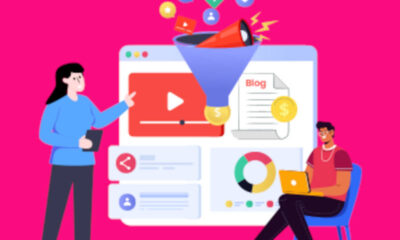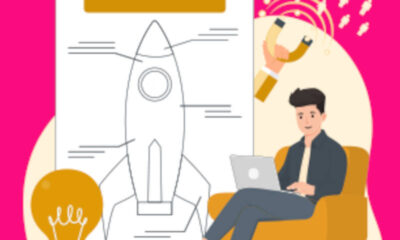Free
How to Edit AI-generated content: 9 Tips for Adding a Human Touch to AI Outputs
Discover the essential tips for editing AI-generated content to ensure it meets high standards and resonates with your audience.
We live in an unprecedented era where generating content has never been easier, thanks to the rise of generative AI. Since the introduction of ChatGPT in November 2022, people have utilized AI in various ways to save time, overcome writer’s block, conduct research, and much more.
However, this accessibility to content creation also presents a challenge. With more people using AI, there’s a risk of generic and uninspired content flooding the web. It’s frustrating for readers to come across poor-quality, repetitive work that lacks a human touch. As content consumers, we want engaging and valuable content that reflects the effort of a human editor.
Whether you’re a marketer, copywriter, journalist, influencer, or a business that employs content creators, it’s essential to strike a balance between leveraging AI’s speed and maintaining quality. Dull and lifeless content will only lead to losing your audience’s attention.
In this era of generative AI, there are two crucial ideas that we need to embrace:
1. Content creators using AI must know how to edit their work to add value beyond what an AI tool can produce alone.
2. Content consumers must learn to identify uninspired AI-generated content to avoid supporting unworthy content creators.
Now, let’s dive into practical tips on how to edit AI content to keep it engaging, valuable, and human:
1. Maximize creativity with a strategic approach:
Think about what you want your audience to learn or do after reading your content. Find unique and valuable ways to present information.
2. Be an authority:
Fill your content with real insights, backed by research and statistics. Earn your audience’s trust by showing your expertise or featuring insights from experts.
3. Consider your audience:
Create a detailed persona of your ideal reader and tailor your writing to meet their specific interests and needs. Use AI tools to deliver accurate messaging.
4. Infuse humanity into your content:
Add your own thoughts, feelings, and experiences to AI-generated content. Inject your tone, style, and humor to make it more relatable. Share examples and anecdotes that only a human can provide.
5. Vary your language:
Avoid repetition and incorporate a wide range of words and phrases. Cut out unnecessary words generated by AI models that don’t add value to your ideas.
6. Elevate your sentence structure:
Break free from monotonous and repetitive sentence structures often found in AI-generated text. Experiment with different sentence structures to make your writing more interesting and engaging.
7. Maintaining Consistency:
The Key to Engaging Content
Once you’ve found your unique tone of voice and writing style, stick with it! Consistency is key to keeping your audience engaged and interested.
8. Embrace Imperfections:
They Make Your Content Special
Let go of the pressure to be perfect. In fact, those little imperfections can actually add a special touch to your art or media. Don’t let an AI assistant make your content sound robotic and less unique.
9. Careful Editing is Essential
Don’t just skim through your work. Take the time to carefully edit every output, making sure to weed out any awkward word choices or sentences. Ensure that your content flows smoothly and naturally. And remember to double-check the facts provided by an AI tool for accuracy and relevancy.
Create Engaging Content with a Human Touch
By following these tips, you can create informative and engaging content that resonates with your audience. The irreplaceable human touch in your work will make it stand out.
AI-generated works have distinct characteristics that set them apart. They often contain errors in common sense, relevance, reasoning, and logic, among others. While it’s not as easy as using an AI content detection tool to spot non-human text, relying on our instincts can help us identify AI content.
Signs of AI-Generated Copy
Here are some signs that the copy you’re reading was likely generated by AI:

1. Repetition:
AI-generated content often repeats phrases or ideas excessively, lacking originality and becoming monotonous.
2. Lack of context or personal experience:
AI lacks personal experiences, emotions, and context-specific insights. This can make the content feel impersonal or nonsensical.
3. Odd phrasing and stilted language:
AI-generated sentences may seem awkward or clunky due to sentence structure, lack of contractions, and the use of uncommon words or phrases. It can also overuse technical jargon or write in an overly formal style, even when the subject matter is casual.
4. Factual errors and outdated information:
While generally accurate, AI-generated content can contain factual errors or outdated information. Always fact-check when possible.
5. Unleash your creativity and originality
AI models are limited to the data they are trained on, which means they can’t come up with unique ideas or speak in a distinctive voice. This often leads to AI-generated content that is predictable and uninspired. Sometimes, AI responses can be lengthy and detailed without adding anything new or meaningful to the conversation.
6. Embrace a consistent tone and style
AI models are trained on a wide range of texts, which can result in inconsistent narratives throughout a piece of content. This can lead to sudden changes in tone or writing style that sound jarring and silly.
7. Seek expert authority
While AI tools are incredibly intelligent, they can’t match the authority and expertise of content written by a human expert. AI generation lacks depth and can’t delve beyond basic facts to analyze the nuances of a topic and provide unique insights.
8. Pay attention to timing
If content is generated and posted at unusual hours or with inhuman consistency, it might be a clue that it’s AI-generated.
9. Spot the visual clues (for images)
AI-generated images may have strange objects, patterns, or inconsistencies that are not typical of human-created visuals. You may have seen AI images with creepy hands and teeth or blurry and clear sections. Textured backgrounds with random brush strokes and washed-out artist watermarks or signatures may also appear.
10. Consider the source
If you’re unsure whether a piece of content was generated by AI, consider the source. Is it coming from a reputable website, organization, or author? Or is it from an unknown or untrustworthy source?
11. Look for typos
AI doesn’t make simple spelling, grammar, or formatting mistakes like humans do. If you spot an improperly formatted apostrophe, a common word misspelling, or another typo, it could be a sign that a human was behind the work.
While these indicators can be helpful, they aren’t foolproof. They can vary depending on the AI tool and the content in question.
Skills-Based Judgement Is Key
No matter how much AI tools assist creators, content should always have some human influence. Whether it’s a single sentence or a full blog post, injecting human insight and edits is essential before consuming it. Period.
As more creators and businesses rely on generative AI, we must be discerning readers. These tools have biases and inaccuracies, and content producers don’t always eliminate them. It’s up to us to be skilled enough to spot not only bad AI content, but also generic, substandard, and misleading work.
“When it comes to AI, people have valid concerns,” said Callison-Burch. “Our study provides evidence to ease these concerns…I believe it’s important enough to teach everyone how to do it.”
On the other hand, content producers using AI must employ best practices and exercise better judgment to ensure their content is trustworthy and worth consuming. Being a human-in-the-loop as a creator means releasing credible and carefully crafted works. Creators who neglect these steps will ultimately experience a lack of engagement with their audience.
Neither readers nor creators should blindly trust and use AI outputs. However, a little discernment and fact-checking on both sides can go a long way. And as AI tools evolve to sound more human-like, honing these skills as consumers and producers can allow us to tap into the genuine benefits of this powerful technology.
“There are exciting positive directions that you can take this technology,” said Dugan. “People tend to focus on the concerning examples, like plagiarism and fake news, but we now know that we can train ourselves to be better readers and writers.”






























